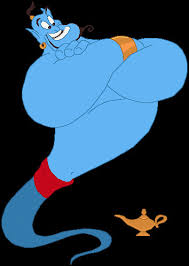Disney’s latest movie, Aladdin, has become the third highest grossing film of 2019 (receiving more than $500 million at the box office) and it has been well-received for its improved awareness and portrayal of Arab culture.
According to ‘The National’ online the new film has a “strong cast” with good “use of the Arabic language” and does a “much better job at representing the region” than the original 1992 animated film starring the voice talents of Robin Williams as the Genie.
The original version was plagued by offensive Arabic stereotypes and labels which imposed a subtle theme of racism throughout the movie, however, the 2019 live-action re-make has taken much care to ensure this hasn’t been repeated.
Here a few ways in which the new Aladdin movie has improved upon its predecessor:
1. Arabic Accent
In the 1992 version of Aladdin, all of the ‘bad guys’ were portrayed with heavy, obnoxious Arabic accents, including, at times, the lead adversary ‘Jafar’, while the protagonists, Aladdin and princess Jasmine, both spoke with clear Americanised accents and had Western-looking features.
The new version has addressed some of these issues through using a diverse cast with backgrounds ranging from Egypt (Mena Massoud), India (Naomi Scott), Tunisia (Marwan Kenzari), Turkey (Numan Acar) and Iran (Navid Negahban and Nasim Pedrad).
Naomi Scott, who plays princess Jasmine, is herself bi-racial which perfectly fits the description of the character whose mother is from another region.
By casting Arabic actors to portray Middle-Eastern roles, Disney have begun to advance their standing for equality and diversity within the movie industry.
2. Racist Lyrics Replaced in Remake
For those of us that remember the original movie, you might be surprised to learn that many of the lyrics were shamefully racist.
For instance, ‘Arabian Nights’ the opening song, described Agrabah as a place ‘where they cut off your ear if they don’t like your face’ and ‘it’s barbaric, but hey, it’s home’.
Fortunately, the new version has revised these lyrics to now include more positive cultural aspects such as, ‘you can smell every spice / while you haggle the price / of the silks and the satin shawls’.
3. Arabic Depictions are Accurate
Finer details of the new movie also highlight a new level of accuracy where Arabic depictions are concerned.
For instance, many written documents that feature in the movie are precise, and show the effort which has gone into ensuring the Arabic translations are correct.
When Jafar checks the map for the location of the ‘Cave of Wonders’ the Arabic translation, Kahaf Al A’jaab, is spot on. Likewise, when the Genie, Will Smith, changes the laws governing marriage to a princess, he unfurls a scroll which is a genuine Arab legal document.
These subtle changes highlight the positive intention that Disney have shown in aiming to steer away from derogatory stereotypes.
4. Arabic Regions Portrayed Through Fashion
Agrabah is a cosmopolitan city where people from all across the Arabic realm can meet and trade, so it isn’t surprising to find that these different regions are depicted through fashion.
There are Afghan ‘payraans’, Indian ‘sarees’, Omani daggers and a multitude of turbans showing styles that are found from the Gulf to the Levant.
5. Advice on Arab Culture for Aladdin
The first Aladdin movie was full of insensitive Arabic representations which were heavily criticised at the time by the American Anti-Discrimination Committee.
To avoid a repeat of these insensitivities, the producers turned to the Muslim Public Affairs Council in Los Angeles. They ensured that portrayals were considerate, accurate and faithful, which in turn, might help to improve both Hollywood’s and the public’s opinion of the Arab world in general.
The need for cultural awareness, and accuracy in translation, shouldn’t be overlooked – especially by those in the public eye such as, Disney, Hollywood, and the movie industry overall.
If you require help with any Arabic translation project, please contact the experts at Creative Word and we can advise you on all areas of the language and culture.


Recent Comments